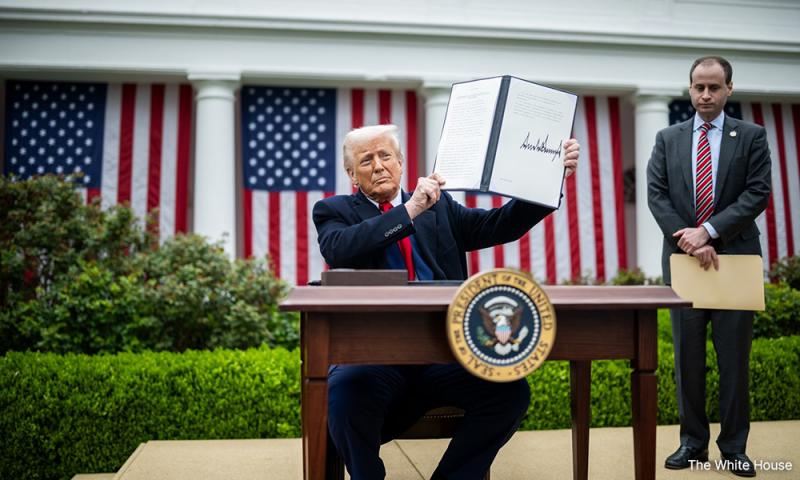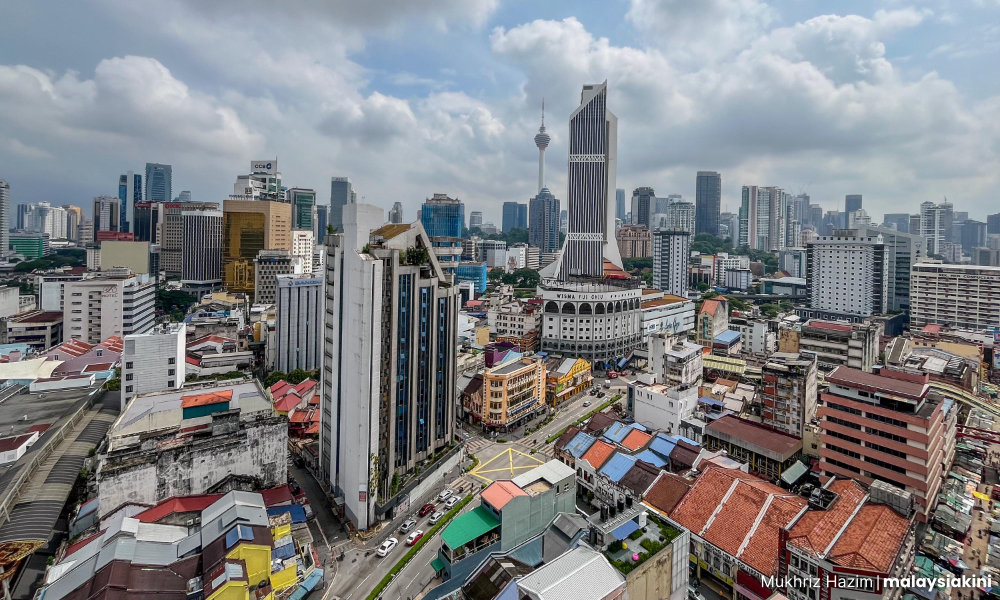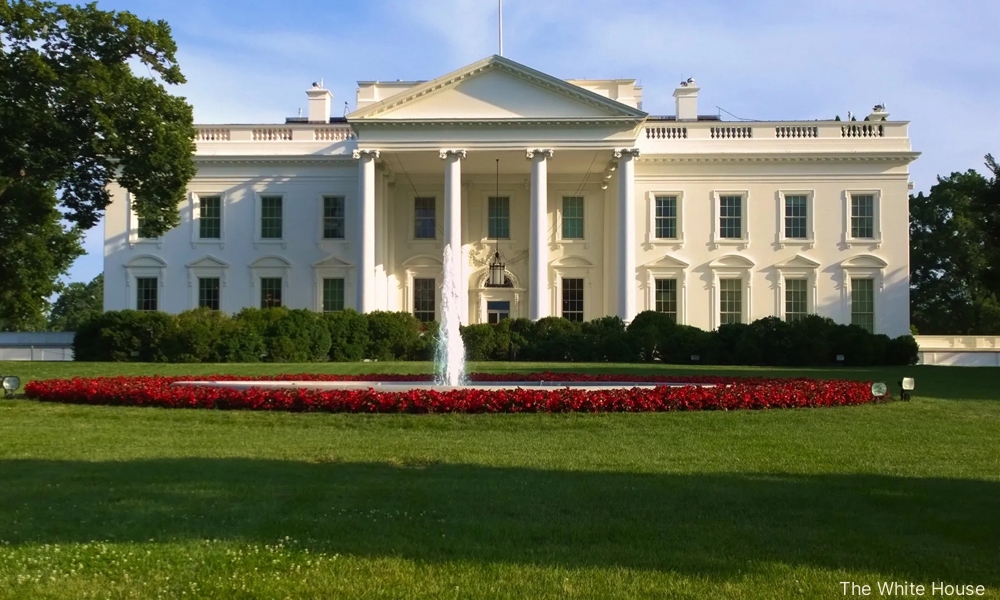
Bridget Welsh
Published: Apr 3, 2025 6:47 PM
Updated: 10:23 PM
COMMENT | The announced “reciprocal tariffs” or “liberation day” has come.
It is a day where the rest of the world looks in dismay at the foolishness of the Donald Trump administration’s “America First” measure tariff regime and deepens discussions on how to liberate their own economies from a country whose leaders seem to care less about the harm being caused.
Today’s reciprocal tariff of 24 percent on Malaysian goods into the United States – with some exemptions, the most important of which for Malaysia’s economy is semiconductors – is arguably the most damaging decision in the history of the bilateral relationship between the two countries.
Malaysian anger – and that of the rest of the world who are being targeted– is fully justified.
So far, the Anwar Ibrahim administration has answered prudently, calling for dialogue and not imposing retaliatory tariffs. There is a recognition that two wrongs with imposing tariffs don’t make a right.
This piece looks at the recent tariffs and offers some suggestions ahead.
Trump’s damaging trade regime
The US administration’s idea of a “reciprocal tariff” aims to balance the trade imbalance between countries. It begins from a misunderstanding of how trade works and a view that tariffs can be used for “correction”.
The nonsensical methodology of how they determine the tariff looks at trade flows to calculate what can only be seen as an arbitrary figure and then discounted even more arbitrarily. Their explanation of calculations can be found here.
Published: Apr 3, 2025 6:47 PM
Updated: 10:23 PM
COMMENT | The announced “reciprocal tariffs” or “liberation day” has come.
It is a day where the rest of the world looks in dismay at the foolishness of the Donald Trump administration’s “America First” measure tariff regime and deepens discussions on how to liberate their own economies from a country whose leaders seem to care less about the harm being caused.
Today’s reciprocal tariff of 24 percent on Malaysian goods into the United States – with some exemptions, the most important of which for Malaysia’s economy is semiconductors – is arguably the most damaging decision in the history of the bilateral relationship between the two countries.
Malaysian anger – and that of the rest of the world who are being targeted– is fully justified.
So far, the Anwar Ibrahim administration has answered prudently, calling for dialogue and not imposing retaliatory tariffs. There is a recognition that two wrongs with imposing tariffs don’t make a right.
This piece looks at the recent tariffs and offers some suggestions ahead.
Trump’s damaging trade regime
The US administration’s idea of a “reciprocal tariff” aims to balance the trade imbalance between countries. It begins from a misunderstanding of how trade works and a view that tariffs can be used for “correction”.
The nonsensical methodology of how they determine the tariff looks at trade flows to calculate what can only be seen as an arbitrary figure and then discounted even more arbitrarily. Their explanation of calculations can be found here.

Closer inspection appears to reveal that they looked at the trade deficit and divided it by the country’s exports, rubbishing any credibility in their assessment.
Their supposed aim is to bring back jobs and investment into the US. In their logic the tariff is a tool that will encourage investment and provide a fairer economic outcome for the US.
It starts from the outlook that globalisation/low tariff trade has not benefited America, pandering to nationalist/protectionist rhetoric riddled with arrogance.
There is little concern for the damage being inflicted on countries, businesses (including US businesses abroad) and the inflationary implications that inevitably will hit consumers the hardest.
Citizens around the world now have to endure a global trade arrangement that feeds retaliation and greater protectionism. The fact that this is deemed as a “celebration” speaks to how disconnected the policy approach is from reality.
Southeast Asia hit hard
Southeast Asian countries have been among the most slammed by these measures. The poorest countries in the region have received among the highest tariffs – Cambodia (49 percent), Laos (48 percent), and earthquake-ravished Myanmar (44 percent).
This is grossly unfair and goes against years of a trade regime that advantaged poorer countries in their development trajectories.
The major economies in the region have not been spared – tariffs for Vietnam (46 percent), Thailand (36 percent), Indonesia (32 percent), and the Philippines (17 percent). Singapore has managed to get the global minimum level of 10 percent.

Cambodia
Compared to most of the countries in Southeast Asia, Malaysia has a lower tariff at 24 percent, but this level is still extremely high and punitive.
Malaysia’s trade to the US was valued at US$53 billion (RM235.48 billion) in 2024, with a trade surplus in favour of Malaysia of US$25 billion. The main items exported to the US in 2024 according to the Observatory of Economic Complexity (OEC) included integrated circuits, semiconductors, telephones, industrial printers and computers.
Of these, only semiconductors are exempt from the new “liberation” tariffs. How long this exemption will be in place is not clear. The effect of the recent tariffs will be on the manufacturing sector, especially concentrated in key areas such as the Klang Valley and Penang.
The effects will extend beyond immediately impacted sectors to include inflationary pressures on the economy as a whole, including introducing an administrative nightmare for customs officials and greater compliance costs for businesses, which will be passed on to consumers.
The tariffs will also lead to geopolitical realignments, as the fact that these measures benefit China’s global position. China is not perceived as starting this trade fight and has been on the receiving end.
Collectively the Trump administration has imposed 76 percent tariffs on China in the last two-plus months that the administration has been in power.
China has responded but, to date, these measures have been constrained. This dynamic will likely evolve as the impact on China’s economy is intense and will also reshape trade relations in the region.
No question, the spillovers to the global economy feed destabilisation, fuel competition and division and raise the spectre of a global recession. This is less than three months of Trump’s havoc.
Key steps to consider ahead
Given that trade punitive politics are far from over, more decisive measures from Malaysia can help ameliorate the negative effects of protectionism.
Appoint diplomatic representation in Washington DC. Malaysia needs to better position herself in the US. The lack of both a Malaysian ambassador or deputy in Washington DC is doing the country no favours and undermines her ability to articulate her interests.
Compared to most of the countries in Southeast Asia, Malaysia has a lower tariff at 24 percent, but this level is still extremely high and punitive.
Malaysia’s trade to the US was valued at US$53 billion (RM235.48 billion) in 2024, with a trade surplus in favour of Malaysia of US$25 billion. The main items exported to the US in 2024 according to the Observatory of Economic Complexity (OEC) included integrated circuits, semiconductors, telephones, industrial printers and computers.
Of these, only semiconductors are exempt from the new “liberation” tariffs. How long this exemption will be in place is not clear. The effect of the recent tariffs will be on the manufacturing sector, especially concentrated in key areas such as the Klang Valley and Penang.
The effects will extend beyond immediately impacted sectors to include inflationary pressures on the economy as a whole, including introducing an administrative nightmare for customs officials and greater compliance costs for businesses, which will be passed on to consumers.
The tariffs will also lead to geopolitical realignments, as the fact that these measures benefit China’s global position. China is not perceived as starting this trade fight and has been on the receiving end.
Collectively the Trump administration has imposed 76 percent tariffs on China in the last two-plus months that the administration has been in power.
China has responded but, to date, these measures have been constrained. This dynamic will likely evolve as the impact on China’s economy is intense and will also reshape trade relations in the region.
No question, the spillovers to the global economy feed destabilisation, fuel competition and division and raise the spectre of a global recession. This is less than three months of Trump’s havoc.
Key steps to consider ahead
Given that trade punitive politics are far from over, more decisive measures from Malaysia can help ameliorate the negative effects of protectionism.
Appoint diplomatic representation in Washington DC. Malaysia needs to better position herself in the US. The lack of both a Malaysian ambassador or deputy in Washington DC is doing the country no favours and undermines her ability to articulate her interests.

This should be urgently corrected. There is a need to appreciate that the US has changed, as has its way of “doing business”. This requires a better understanding of the dynamics and drivers of current US policy.
Avoid the bilateral negotiation trap. While Malaysia needs to negotiate for herself, this go-it-alone approach should be understood as one of the intentions of the Trump trade regime.
Malaysia is weaker in negotiating by herself than with like-minded countries, especially in Asean. The need for cooperation among the region’s economies is more pressing than ever. This can be buoyed by the meeting of the Asean finance ministers in Kuala Lumpur next week.
Deepen existing trade agreements. The Regional Comprehensive Economic Partnership (RCEP) and Comprehensive and Progressive Agreement for Trans-Pacific Partnership (CPTPP) collectively comprise 20 countries to work to strengthen trade ties. They provide like-minded partners to strengthen trade ties.
Speed up trade negotiations with the European Union and Gulf Cooperation Council in ongoing trade discussions, as well as those with Africa. While decoupling from the US given the structure of the Malaysian economy is impossible in the short term, longer-term relationships with other countries offer Malaysia greater diversity and protection.
Better analyse consequences for food security, inflation and the impact on key sectors in the economy. Do not assure that the exemption on semiconductors will remain for the duration, for example.
More research inputs are necessary to examine the effects of tariffs more holistically on Malaysia’s economy and society. Ongoing discussions with businesses need to be further enhanced, with regular rather than ad hoc engagements. Malaysia needs to understand how potential redirected trade flows might impact local businesses and groups within Malaysia both positively and negatively.
To date, Malaysia has adopted a “wait and see” approach to the Trump tariff measures, attempting to keep a “low profile”. The time to wait is long over.
The focus needs to be on “seeing”. The solutions to Trump tariffs have to go well beyond negotiations. It is important to appreciate that Malaysia and her economy are resilient, but these Trump tariffs are harmful, intentionally so.
Proactive, prudent planning is critical.
BRIDGET WELSH is an honorary research associate of the University of Nottingham’s Asia Research Institute, a senior research associate at Hu Fu Centre for East Asia Democratic Studies, and a senior associate fellow at The Habibie Centre. Her writings can be found at bridgetwelsh.com

M'sia has NO farsighted international policies. She has consistently letting the local trading/industrial companies to source markets outlets. The ketuanan narratives make the grade decision, ineffective, inefficient & cronyism based.
ReplyDeleteWith the exception of later yrs ministerial watch of Rafidah Aziz, all other trade ministers were just wall flowers sucking the flow of local trades dry!
Not many people realize that the tariff weapon deployed by Trump has been used by President Herbert Hoover.
ReplyDeleteThe Tariff Act of 1930, commonly known as the Smoot–Hawley Tariff Act, was a highly protectionist trade measure that was signed into law in the United States by President Herbert Hoover on June 17, 1930.
The subsequent trade wars between trading nations, especially Europe & US, contributed to The Great Depression of the 1930s.
President Roosevelt's effort in ameliorating the great depression brought little results until the start of WWII.
ReplyDeleteThe financial loans to both Axis & Allies, coupled with the sales of military HW to whoever willing to buy, helped the America to be released from the grips of the great depression.
Trump is most likely taking a page out from this economic saga, with the MAGA act learnt from how Hitler made the depressed German proud against their trumpled ego under the WWI humiliations.